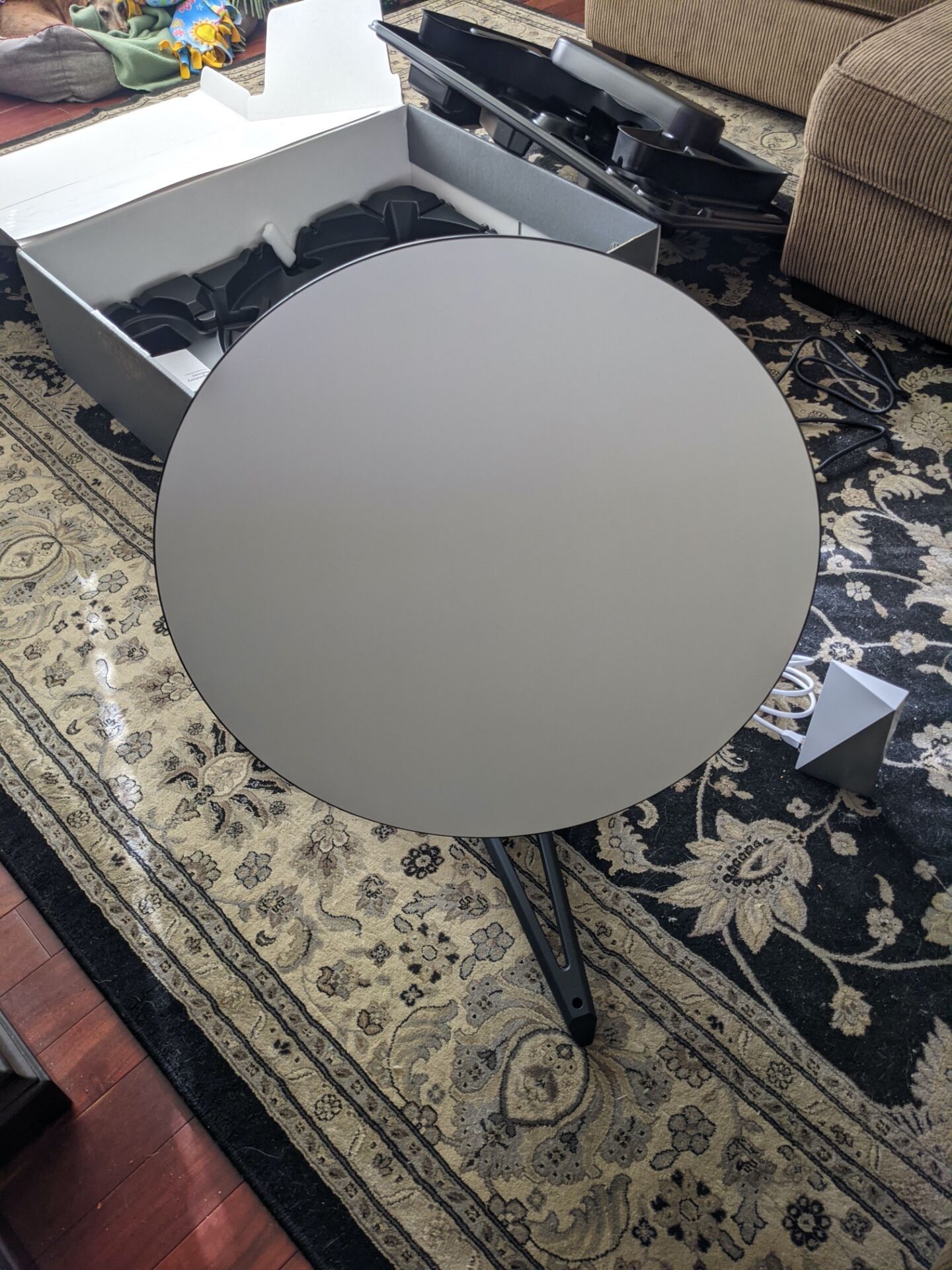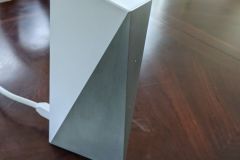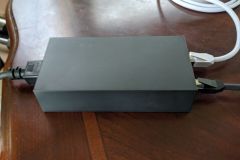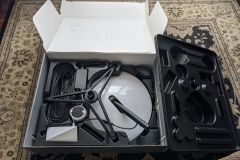“It feels like it’s from the future… I am amazed at how well it works.”
SpaceX Starlink beta users are starting to share their experiences, confirming that the satellite service can provide fast broadband speeds and low latencies in remote areas. A beta tester who goes by the Reddit username Wandering-coder brought his new Starlink equipment and a portable power supply to a national forest in Idaho, where he connected to the Internet with 120Mbps download speeds.
Starlink “works beautifully,” he wrote yesterday. “I did a real-time video call and some tests. My power supply is max 300w, and the drain for the whole system while active was around 116w.” Starlink pulled that off in a place where Wandering-coder couldn’t get any cellular service from Google Fi, which relies on the T-Mobile and US Cellular networks. “There is no cell here with any carrier,” he wrote.
Wandering-coder used Starlink connectivity in the forest to make that post on Reddit and to upload a series of pictures to Imgur. Wandering-coder told Ars that he uses Starlink at home in North Idaho and that he conducted his test at the Hayden Creek Shooting Range in the Idaho panhandle’s Coeur d’Alene National Forest.
Here are some pictures from Wandering-coder’s test in the forest and shots of the user terminal outside his home:
no images were found
With the Starlink user terminal/satellite dish placed on the ground in a relatively open part of the forest, Wandering-coder did a speed test that measured downloads of 120Mbps, uploads of 12Mbps, and latency of 37ms. He got worse results in a different, more heavily forested location where he placed the dish closer to the trees because Starlink needs a clear line of sight to SpaceX satellites. “It didn’t work well with a heavy tree canopy/trees directly in the line of sight, as expected,” Wandering-coder wrote. “I would be connected only for about 5 seconds at a time. Make sure you have a clear view of the sky as possible!”
Wandering-coder is not urging other Starlink testers to complete the same experiment in case SpaceX objects to beta testers using the service away from their registered location. “All things considered, [it’s] probably best to keep [the user terminal] were registered until there is official illumination on the topic,” he wrote. “Just knowing mobility is possible, though, is nice.”
“It feels like it’s from the future”
Wandering-coder also shared initial impressions in another Reddit post and a series of pictures of the equipment at his home. Here are some shots from unboxing the equipment:
“Everything is of an extreme build quality, and this works significantly better than I had ever imagined,” Wandering-coder wrote. “It feels like it’s from the future. Given a top-tier cell phone costs in the $1,000 range, I am completely amazed I have my hands on a setup like this for ~$500, so I am biased positively towards this service.”
As revealed last week, the Starlink beta costs $99 a month plus $499 upfront for the user terminal, mounting tripod, and router.
At home, Wandering-coder says he got 135Mbps download speeds, 25Mbps uploads, and 21ms latency when the dish was placed in a ground-level spot with “limited obstruction” between the dish and sky. He also tested the user terminal in a different spot with “significant obstruction” in the form of “bad weather, treetops, fences, [and] houses,” he wrote. Even in that scenario, he reported download speeds of 46Mbps, upload speeds of 15Mbps, and 41ms latency. When he conducted the tests, he hadn’t placed the antenna on his roof yet.
“Given all the obstructions for this connection at the moment, I am amazed at how well it works,” he wrote. “Streaming, low-latency video conferencing, and gaming are all completely accessible with this service. Even for the beta, it appears as though they’ve under-estimated Starlink’s capabilities, so I am excited to see it mature.”
Though mounting a user terminal on one’s roof is bound to be complicated, Wandering-coder wrote that everything else is pretty simple:
Bootup is roughly 1 minute when plugged into power, then it takes anywhere from 1 minute to 15 minutes to properly orient mechanically. Positioning is all done automatically, so it’s basically plug & play… There is a single powered Ethernet wire from the antenna array to the power supply, and a single powered Ethernet wire from the power supply to the router. The provided antenna wire is fixed to the antenna, but well over 100′ (by estimation, I didn’t measure the length). There is no setup involved besides physical placement and setting a name of the Wi-Fi network and password—all the tricky stuff is automated.
Starlink is much faster than traditional satellites
New speed-test data collected by Ookla and published by PCMag last week found average Starlink download speeds of 79.5Mbps and average upload speeds of 13.8Mbps in October when the service was in a more limited beta. The same data found average download speeds of 24.75Mbps for Viasat’s Exede service and 19.84Mbps for HughesNet, both of which offer services from geostationary satellites. Upload speeds for Viasat and HughesNet were 3.25Mbps and 2.64Mbps, respectively.
Starlink’s low-Earth orbit satellites significantly outperformed the higher-orbit satellites on latency, with Starlink posting a 42ms average. Viasat and HughesNet came in at 643ms and 728ms, respectively, according to PCMag.
SpaceX’s invitations to new users last week told them to expect “data speeds vary[ing] from 50Mbps to 150Mbps and latency from 20ms to 40ms over the next several months as we enhance the Starlink system… For latency, we expect to achieve 16ms to 19ms by summer 2021.”
One Montana resident posted a speed test result with a 174Mbps download speed, 33Mbps upload speed, and 39ms latency. “Way out in rural Montana; our alternative is to pay by the gig. Starlink will forever change the game,” the beta tester wrote on Reddit yesterday.
The Starlink Reddit community has several resources for tracking beta progress, such as a list of user speed tests and a list of states where at least some people received beta invitations. Those states are Idaho, Michigan, Minnesota, Montana, Oregon, Washington, and Wisconsin. You can also check out one user’s 10-second video for a sped-up look at the unboxing process.
SpaceX CEO Elon Musk wrote on Twitter today that “several thousand more Starlink beta participation invitations [are] going out this week.”
Listing image by Wandering-coder





